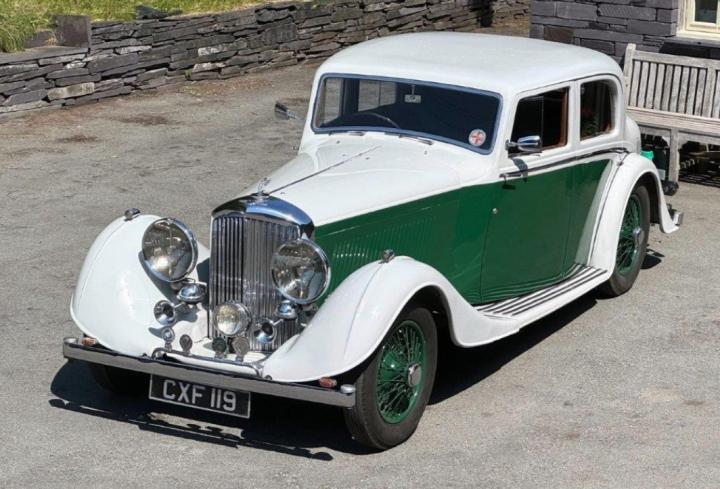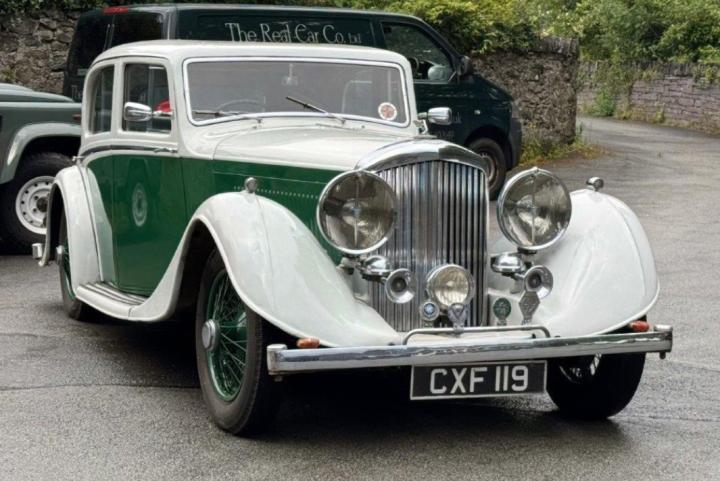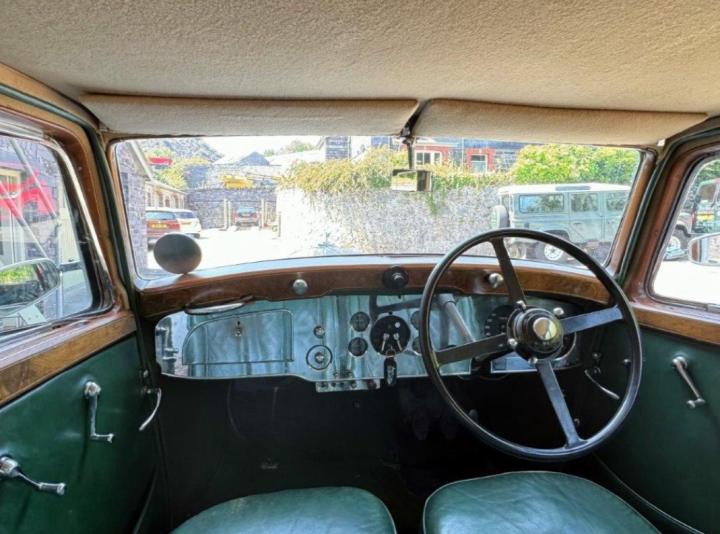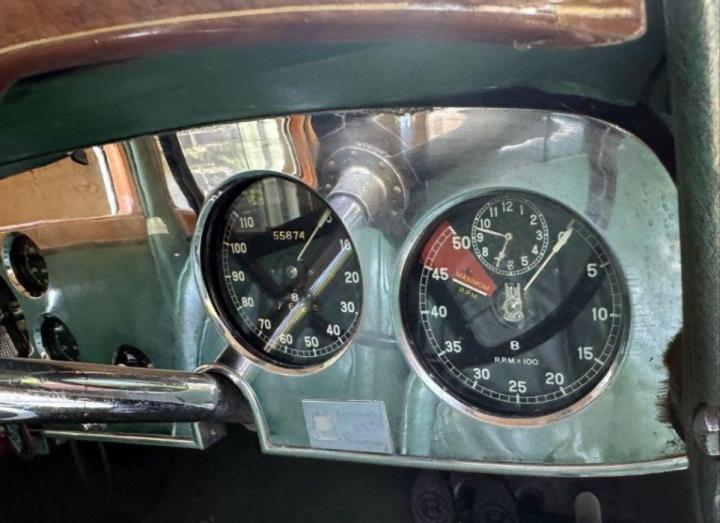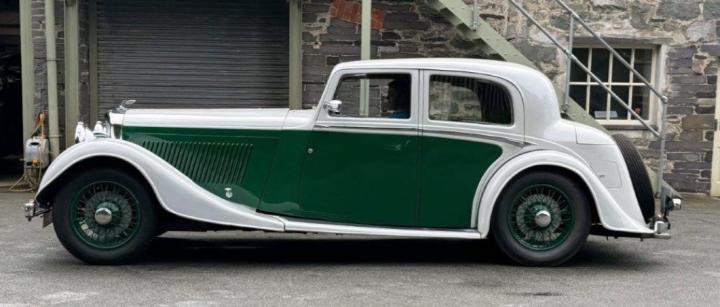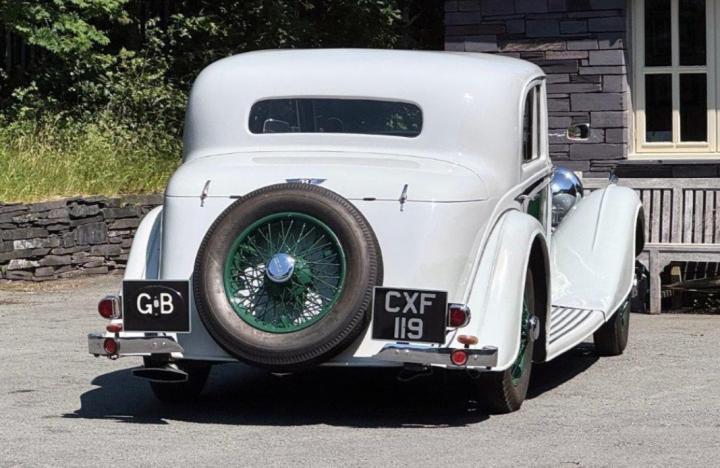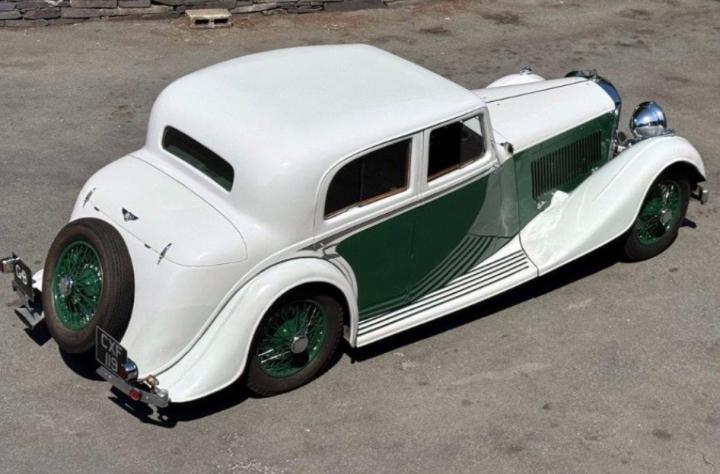1935 Bentley 3½-Litre Thrupp & Maberly Sports Saloon
£ 44500

|
Karosserie
|
Saloon
|

|
Übertragung
|
Manual
|

|
Außenfarbe
|
White
|

|
Polsterei
|
Leather
|

|
Lenkung
|
Rhd
|

|
VIN-Nummer
|
B36EF
|
1935 Bentley 3½ Litre Thrupp & Maberly Sports Saloon
A very attractive car, well-proportioned and with some appealing touches, such as ‘trouser crease’ wings, chrome waistline mouldings, Marchal headlights (as per original spec), long trumpet Lucas horns, and – very unusually – a chrome plated dashboard. Finished in light grey and green, harmonising nicely with the original green leather interior. An essentially good car, running well and driving nicely. The history file includes, amongst many other documents, evidence of an engine overhaul in 2016, (which included new main and big end bearings), a number of old MoT certificates, a tax disc from 1970, various invoices, an ownership record, etc, etc. Originally used as a ‘trials car’ or demonstrator, by Jack Barclays, and registered JB1000, featuring many times in the official quarterly Bentley journal of the 1930s, ‘On the Road’. Some of the pages from this are reproduced below, and there are many more!
Chassis No. B36EF.
Reg No. CXF 119.
Price £44,500.
Snippets: Gun Roller & a South African Loch
After being used by Jack Barclay as their show car B36EF was sold to Arthur David Tipper of Handsworth Wood in Birmingham. His father (Joseph) & uncle (Henry Powell) were involved in the steel industry and in whose footsteps Arthur followed. In 1865 his uncle Henry Tipper had registered Patent Nr 1738 for “improvements in manufacturing gun barrels & tubes of cast steel & iron”. Almost 60 years later Arthur Tipper also applied for patents – this time relating to sash windows, door latches, door locks, door hooks & metal brackets – I’m sure many of us can remember the hooks in school corridors and changing rooms!
In 1939 the Bentley was bought by John Christian Duncan (1892/1947) & his wife Edith Clark Clark-Neill Duncan of 49 Knightsbridge Court, London. John Duncan was originally from Loch Bridge, Barkly East – not in Scotland as one would guess but a place on the banks of the Kraai River in Eastern Cape, South Africa. Loch Bridge was built in 1893 at a cost of some £15,000 and was named after the then Governor of the Cape Colony – Sir Henry Brougham Loch (1827/1900). John Duncan’s wife – Edith – was the wealthy widow of James Clark-Neill of Curling Hall, Largs who had died in 1918 (John & Edith married in 1919). James Clark-Neill was a scion of two equally industrious families with his mother Elizabeth Clark – cotton, fabrics & thread (she left £11m in 1900) & his father William Neill – the sugar industry (he left £11m in 1903)!
Just before John Duncan’s death B36EF was sold to the Campbell family who kept the car until 1976 – there is a note with the car that in 1969 it was used by Peter Campbell whilst he was training at Sandhurst – he later served with the Rhine Company. Peter has very fond memories of the car & would enjoy relating tales of his ownership with the next custodian.
The third private owner (1976 to 1993) was a noted European collector who sold his collection in 1993 due to ill-health.
A later owner’s address was 47 Emperor’s Gate, London Nrs 37-47 were built in the 1870s by Henry Harris & the street was named in honour of the German Kaiser! The same owner had a property in the in the village of St. Martin Des Boscherville which was where Louis Fabulet (1872/1933) lived whilst he translated “The Jungle Book” by Rudyard Kipling.
